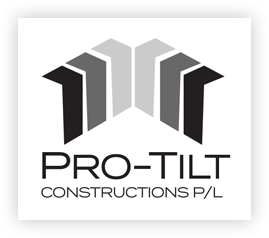Everything You Need to Know About Tilt-Up Construction
23 February 2023Tilt-up construction entails producing substantial concrete panels and then lifting/tilting them into position with a crane. Due to its capacity to enable quick project completion, tilt-up panel construction has become an incredibly popular construction technique for commercial and industrial developments.
Tilt-up concrete walls are one of the most affordable construction techniques being denser than brick and versatile in form. They also require fewer joints and are extremely durable. The location of the concrete slab’s manufacturing and pouring is where the confusion usually happens. Let’s look into tilt-up construction in more detail.
How Tilt-Up Construction Works?
A building’s exterior wall is created by tilting a sequence of concrete panels into position. Concrete, rebar, and timber forms are used to construct these panels on the job site. Forms are cut from rebar and shaped to meet final designs. Concrete is then finished by being poured into the moulds.
Once the walls are complete, they are slanted into a vertical position and placed on foundation footings, where they serve as the building’s external structure. Each panel is momentarily supported till the roof connects the building. The part of these panels that faces the outer surface is a blank canvas that you may cover with nearly any type of exterior siding, cladding, or veneer. The interior can also be further insulated or covered in different ways to suit the unique requirements of a facility.
The Ups and Downs of Tilt-Up Construction
Tilt-up construction was traditionally used in Australia for low-rise industrial estates in regions with plenty of flat ground since the procedure could be finished quickly. But as time went on, tilt-up gained popularity in urban areas and is now being used for an increasing number of high-rise construction projects like apartment buildings.
It uses a method that is frequently comparable to applications for permanent formwork, and these two quick processes are overtaking the nation.
Despite all of this, tilt-up construction still faces a number of difficulties. The first of these is design tolerances, where each panel needs to be precisely manufactured so that every component lines up correctly when it is fastened together. Safety is another major worry, and while panel collapses are relatively uncommon, they have happened occasionally throughout the years, stressing the significance of proper and careful installation.
Tilt-up Panels Require the Right Anchors
As one might anticipate, the brace that keeps each portion in place is one of the most important elements of the tilt-up construction process. The cast-in ferrule must be flawlessly designed and correctly installed for each prop to fasten on the vertical plane securely. The horizontal plane’s anchor, which is always post-installed, is connected to the slab in the same way. Each building constructed utilising the tilt-up method is as sturdy and solid as possible thanks to the anchors, which strictly follow the national regulatory code.
Do you want to find out if Tilt-Up is the right choice for your upcoming building project? Let’s discuss it. Our team of building professionals at Pro-Tilt Constructions will be more than delighted to help you with your upcoming construction project. Our area of expertise is concrete work, which includes everything from site preparation for footings to the construction and installation of tilt panels. If a lock-up stage development is needed, we may provide it to clients. Contact us now to get started!
Optimized by: Netwizard SEO

